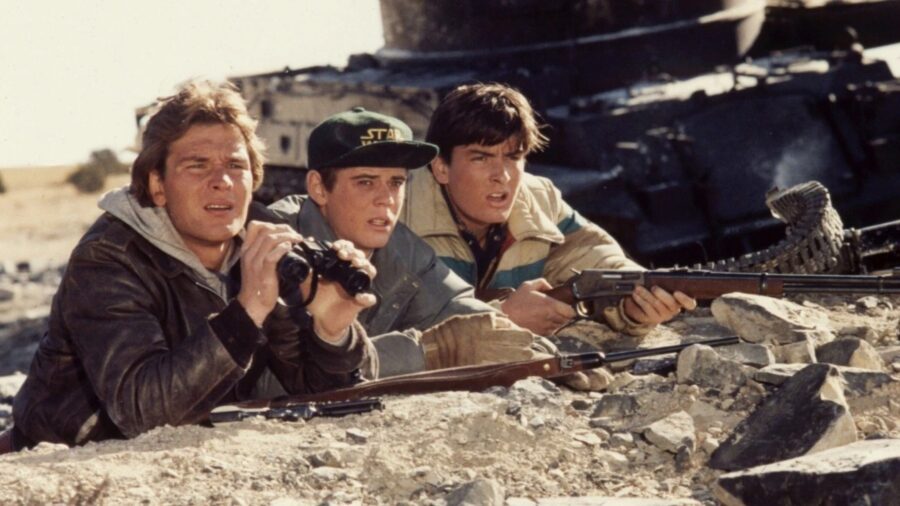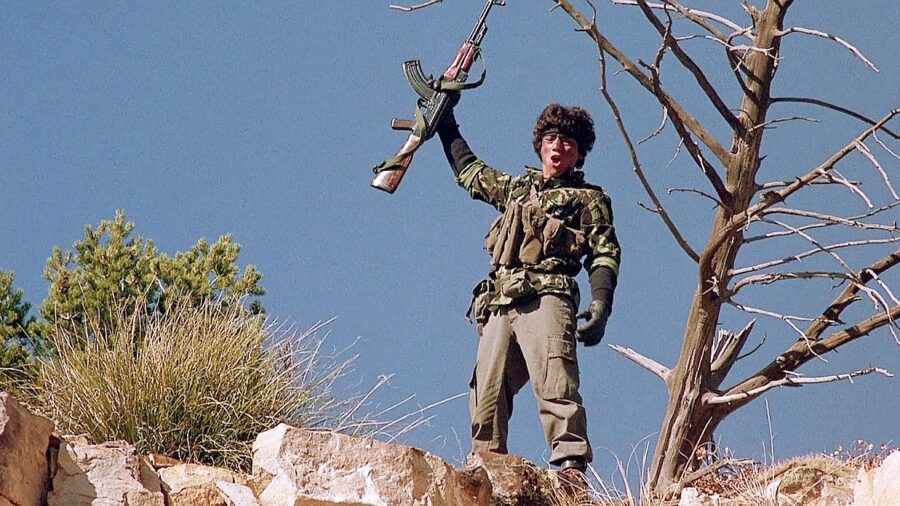The ’80s Classic That Was Given The First PG-13 Rating
The 1980s saw the creation of the MPAA's PG-13 rating, which allowed movies like this action classic to reach new audiences.
This article is more than 2 years old

The 1980s were an odd time. The directors collectively lumped in together as the “New Hollywood” had definitely transitioned from being iconoclastic mavericks to all-powerful kings of show business, and they were beginning to realize it. The most commercially successful of them, Steven Spielberg, had run into difficulties when his prequel film Indiana Jones and the Temple of Doom ran afoul of the Motion Picture Association of America. The MPAA was pretty sure that a movie that involved human sacrifice, the consumption of monkey brains, and a room full of terrifying insects probably did not qualify for a PG rating (though they were fine with the racism). Since Spielberg had a whole lot of power in Hollywood then and now, he gently insisted they give him the PG rating anyway and then recommended they come up with some kind of rating between PG and R, possibly while telling them to stay out of his way from now on. A few months later, the cult classic action film Red Dawn was released as the first movie to receive a PG-13 rating from the MPAA.

Red Dawn was directed and co-written by one of the lesser-known, but highly influential New Hollywood figures, John Milius. While he is not a household name in the same way as Steven Spielberg, George Lucas, or Francis Ford Coppola, he was a classmate of Lucas at the University of Southern California and highly respected by all of them. It makes a good deal of sense that John Milius would be served well by his peers’ success, and the Red Dawn PG-13 is a perfect example. Even just a few years before its release, the idea that Red Dawn would receive anything but an R-rating would be laughable, but the advent of PG-13 allowed for a whole new level of violence and mayhem on screen that perfectly suited Milius.
Red Dawn was a perfect convergence of elements that could only come together at that exact time: the newly created PG-13 rating allowed younger audience members to see the movie alone, hugely widening its commercial appeal. A whole group of young stars was newly emerging (many of them of the group loosely and retroactively dubbed “The Brat Pack”) that Red Dawn and its PG-13 rating could use as draws. Finally, Cold War tension and American action movie propaganda were reaching their height; movies examining the fallout of the Vietnam War like Sylvester Stallone’s First Blood were losing ground to Sylvester Stallone’s Rambo: First Blood Part II. In just a few short years, Hollywood’s brief foray into examining the toll of war had transitioned into the visceral thrills of watching Patrick Swayze mercilessly gun down Soviet soldiers.

From a propaganda standpoint, Red Dawn absolutely deserves to be a PG-13 movie. There is no better way to get young viewers on board with the idea that they can and should respond with lethal force and guerilla tactics to a scenario in which Soviet soldiers apparently make a small Colorado town the key to a ground invasion of the United States. The world in which this is made at all possible is spelled out in a series of opening texts, which notably take longer to explain why the USSR would do this than Blade Runner did to explain a future world of humanoid replicants and space travel a few years earlier. Combine this with the potent young star power of Patrick Swayze, Charlie Sheen, Lea Thompson, C. Thomas Howell, Jennifer Grey, and Harry Dean Stanton, and Red Dawn is one of the most effective PG-13 action movies ever made.

According to the National Coalition on Television Violence, Red Dawn had the most acts of violence committed per hour than anything else they had ever seen, despite the PG-13 rating. Despite the approximately 134 violent incidents per hour of the film (or more likely, because of it), Red Dawn was a commercial success, grossing $38 million at the box office off a $17 million budget. This was unquestionably due to the new PG-13 rating, which finally allowed teens and children access to the violence and ideological conflict between nations they so craved. Despite a poorly-received 2012 remake (this time involving North Korea after the studio realized they could not afford to antagonize the Chinese film market), Red Dawn is still one of the most potent movies of its kind in the entire 1980s.










